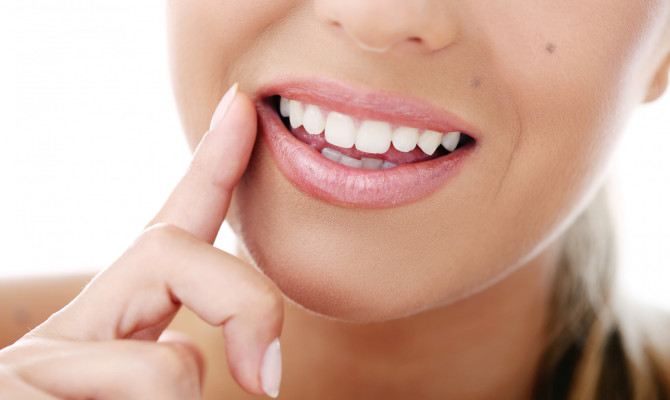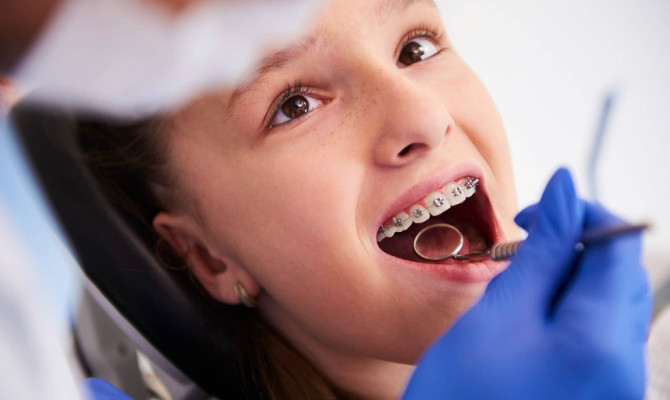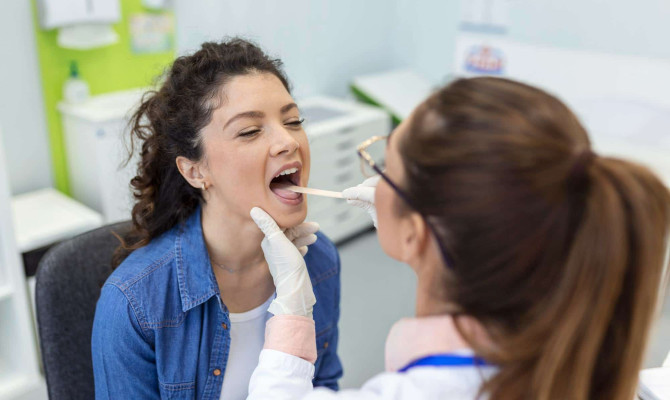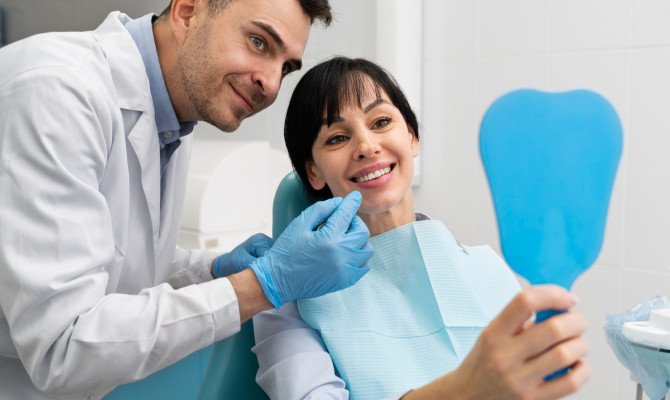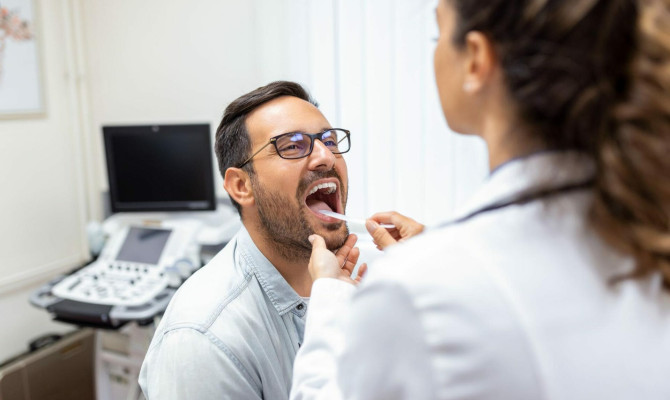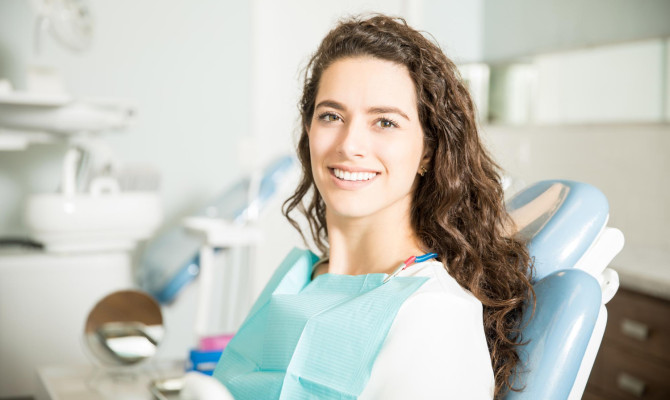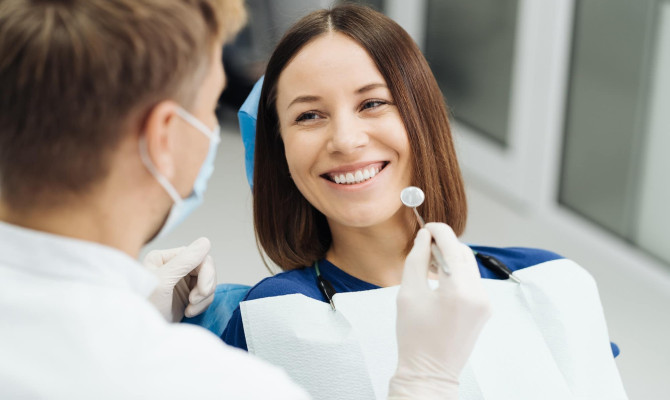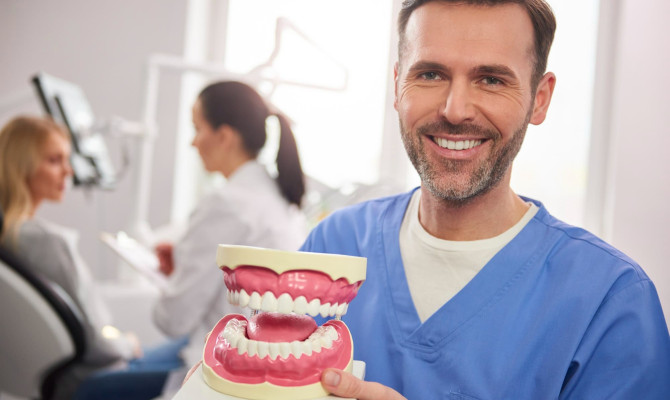Invisalign aligners : What do I need to know?

- Aligners
- 16 Aug 2023
Overview
What is Invisalign ?
Invisalign is a form of orthodontic treatment that progressively realigns teeth using transparent plastic trays. They are virtually unnoticeable, detachable, and made to suit each patient’s teeth, unlike braces, which employ brackets and wires to reposition teeth. They are becoming an increasingly common option for orthodontic treatment.1Overview| Researched based study from Aaoinfo.org
This article will go over how Invisalign function, several available types, the course of treatment, and more.

Benefits
Benefits of using Invisalign
Straighten teeth
- The primary benefits is to straighten teeth and treat malocclusions, including overbites, underbites, and crowded or misaligned teeth. The treatment time varies, and they are often used to address mild to severe problems.
Beautiful smile
- Invisalign aligners may enhance a person’s smile’s appearance and the functioning of their teeth and jaws.
Comfortable
- Invisalign are preferred because of their comfort, simplicity, and clear and discrete look.
Detachable
- They may be taken out for special events and are detachable, making eating and cleaning simpler than braces.1Benefits| Researched based study from Aaoinfo.org
Function
How do Invisalign function?
- Invisalign can shift the teeth by exerting constant light pressure. Each set is built specifically for the patient’s teeth and is intended to move the teeth slightly over a brief period.
- The patient changes to a new pair every two weeks or as directed, and they usually are worn for 20 to 22 hours each day.
- They work by applying pressure to specific teeth or groups of teeth, causing them to move gradually into the desired position. The teeth’s supporting bone shifts as a result of the strain. By creating room for the teeth to slide into, they also assist in guiding the teeth into their correct alignment.
- The dentist monitors the process and adjusts as needed during the procedure. Depending on how severe the illness is, treatment may take several months to a few years.1Function| Researched based study from Aaoinfo.org
Types
Type of Invisalign
Clear
- The most typical kind of Invisalign aligners are these. They comprise BPA-free transparent plastic, precisely molded to the patient’s teeth.
Tooth-colored
- The only difference between them and transparent aligners is that they are composed of a plastic substance that matches the patient’s teeth in color.
Lingual
- They are fixed to the back of the teeth, much like conventional braces. They are made of a material that resembles tooth enamel.3Types| Researched based study from Jrmds.in
Invisalign & Braces

What separates Invisalign from braces?
Here are some of the critical variations:
Appearance
- The most apparent distinction is their outward look. Unlike regular braces, which have metal brackets and wires that are more apparent, Invisalign are composed of translucent plastic and are almost undetectable.
Comfort
- Invisalign are often more pleasant to wear than braces since they are constructed of smooth plastic explicitly fitted to the patient’s teeth, as opposed to braces, which might include metal brackets and wires that may irritate the wearer.4Invisalign & braces| Researched based study from Nlm.ih.gov
Maintenance
- Since they are detachable, cleaning and maintaining them is simpler. Patients may use them to brush and floss their teeth, which can assist in avoiding gum disease and cavities.
Treatment period
- Depending on the severity of the situation, the Invisalign therapy length is frequently less than with braces.2Invisalign & braces| Researched based study from Nlm.nih.gov
Cost
- Invisalign are often more expensive. However, prices might change based on the location and treatment plan.
Effectiveness
- Both help treat various orthodontic problems, although more complicated situations are better suited for conventional braces.4Invisalign & braces| Researched based study from Nlm.nih.gov
Aesthetics
- Since almost invisalign aligners are far less evident than conventional braces. This may be highly enticing to adults who feel self-conscious about having braces.
Removability
- You may take invisalign out to eat, clean your teeth, and floss since they are removable. This can help avoid oral illnesses and simplify maintaining proper oral hygiene while receiving treatment.2Invisalign & braces| Researched based study from Nlm.nih.gov
Fewer appointments
- They frequently need fewer orthodontist appointments. For patients with hectic schedules, this can be a more practical choice.
Predictable results
- They were created using 3D modeling technology, enabling the dentist to construct a personalized treatment strategy to anticipate how the teeth may move. More dependable and effective treatment outcomes may follow from this.
Versatility
- They effectively treat various orthodontic problems, such as overcrowding, gaps, overbites, under bites, and cross bites.2Invisalign & braces| Researched based study from Nlm.nih.gov
Disadvantages
Disadvantages of using Invisalign
Compliance
- The patient must wear them for at least 20 to 22 hours per day for them to be effective. The course of a patient’s therapy could not go as expected if they do not comply with this.
Speech
- While wearing them, some individuals may notice brief alterations in their speech. This is because, until the patient gets used to wearing them, they may produce a slight lisp or other speech impairment.
Cost
- They could be more expensive. Depending on how complicated the case is, the price may change.
Maintenance
- Requires proper maintenance and care, such as routine cleaning and appropriate storage. If you don’t, germs can accumulate, creating foul breath and other serious health issues.
Not appropriate for every user
- They might not be appropriate for those with specific dental or oral health issues.4Disadvantages| Researched based study from Nlm.nih.gov
Process
Treatment Process of Invisalign
Following a dental examination, the orthodontist will create a treatment strategy based on the patient’s requirements and goals.
A digital scan or an impression
- The patient’s teeth will be digitally scanned or subjected to impressions. The 3D model of the teeth made from these will be used to develop the unique models.
Manufacturing and delivery of invisalign
- Based on the 3D model, they are manufactured specifically to suit the patient’s teeth. The patient will be given a set of aligners to wear for a predetermined period, usually in a series.
Switching to new invisalign
- The patients will change to a new set as instructed every one to two weeks.
Checkups scheduled
- visits with an orthodontist regularly to check on the patient’s development and ensure their treatment is going according to plan. If necessary, adjustments can be made.6Process| Researched based study from Nlm.nih.gov
Who is a suitable candidate for invisalign aligners?
There are a few factors to bear in mind, though, since many people may find them to be a suitable therapeutic option:
Adults and teenagers
- They are a viable choice for treatment for both adults and teenagers. Adults, however, could need more extensive orthodontic care since they may have missing teeth or problems with jaw alignment. Teenagers may require extra supervision and coaching to guarantee compliance.1Process| Researched based study from Aaoinfo.org
Types of malocclusions that can be treated
- They can successfully address mild to severe malocclusions such as crowding, spacing, and biting. However, complex scenarios require braces.
Limitations
- For example, teeth that are rotating or protruding may not respond as well to treatment with aligners. Additionally, individuals with extensive bridgework or fillings may not be excellent candidates for aligners.1Process| Researched based study from Aaoinfo.org
Care
Invisalign related care and follow-up
Cleaning and storage
- To avoid bacterial growth and odor, keeping aligners clean is critical. They should be brushed twice daily with a gentle toothbrush and light soap or cleanser.
- Before and following usage, Invisalign should be adequately cleansed with water. With a soft toothbrush and a mild soap or cleaner, they should be brushed twice daily. When not in use, they should be stored in their case to guard against damage or loss.
Retainers and follow-up
- Patients might need to wear a retainer after treatment is over in order to preserve the outcomes.
- Invisalign may need to be worn full-time for some time before gradually transitioning to nighttime wear only. Long-term success depends on adhering to the wearing and care recommendations.
Potential complications and how to address them
- Even though they are typically secure and efficient, there are some possible risks. These could include speech difficulties, gum or mouth soreness, irritation, or aligner fracture.
- If a patient encounter any of these problems, they should make an appointment with their dentist to treat them appropriately.5Care| Researched based study from Nlm.nih.gov
Bottom line
The bottom line
Invisalign aligners are a popular treatment choice because they provide several benefits over braces. They might not be appropriate for everyone, so it’s crucial to consult with an orthodontist thoroughly to decide if they are the right choice for you.
Remember that getting braces is a financial investment in your overall health and well-being. They can assist you in achieving a healthy and beautiful smile with the proper maintenance and care.
Any feedback on this article?
 This Articles content was accurate
This Articles content was accurate Very Informative Article
Very Informative Article I have a question or a comment
I have a question or a comment
 This article contains inaccurate content
This article contains inaccurate content This article was not helpful
This article was not helpful I have a question or a comment
I have a question or a comment
We appreciate your helpful feedback!
Checkout our social pages
References
-
American Association of Orthodontists
Orthodontic Treatment with Clear Aligners | Overview | Process | Benefits
-
National Library of Medicine
A comparison of treatment effectiveness between clear aligner and fixed appliance therapies | Invisalign & braces
-
Journal of Research in Medical and Dental Science
A Clear Alternative to Braces-Aligners: A Comprehensive Review | Types
-
National Library of Medicine
Advantages and disadvantages of clear aligner treatment in orthodontics | Disadvantages
-
National Library of Medicine
Cleaning and Disinfection Protocols for Clear Orthodontic Aligners: A Systematic Review | Care
-
National Library of Medicine
Clear Aligner Treatments in Orthoperio Patients | Process












